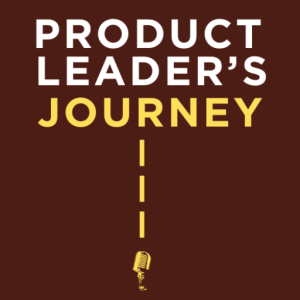There is a scene in “The Godfather”, where Rocco kills Paulie Gatto in the car and Clemenza tells Rocco, “Leave the gun, take the cannoli”. Clemenza’s wife has asked him to bring some cannoli home, but he has another task to be done. He has to finish Gatto, Vito Corleone’s driver, for treason. So the murder takes place during the cannoli errand. After Rocco kills Gatto, Clemenza instructs him to leave the gun, but to take the cannoli.

What is the significance of this line, and why am I bringing it up here in reference to the iPhone 5S? In the mob world, a murder is just part of the job, not much to be dwelled upon. Other things, like cannoli, are more important. We’ll see how this applies to the iPhone 5S.
A comment on my previous post mentioned Apple’s unveiling of the iPhone 5S as unimpressive, and noted that the presentation was all about technical features and not so much about value — “64-bit is great, fast, number of transistors, new gold color for flashiness, new fingerprint sensor made of sapphire and “x” microns thick etc. No good message on what the core values were – in fact it made it seem that Apple is “lost” without its founder’s vision.”
There are similar articles in the media about Apple’s perceived lack of innovation, and that the new iPhones are only an incremental update with not much to be impressed with.
My initial reaction on the iPhone 5S keynote was similar. However, after thinking about this some more, I have a slightly different view on it.
Since the launch of the original iPhone in 2007, we have had 8 iPhone versions – iPhone, 3G, 3GS, 4, 4S, 5, and now 5C and 5S. From the original set of competitors mentioned by Steve Jobs in the keynote — namely, Blackberry, Palm, Windows based Motorola, and Symbian based Nokia phones — all of which have been left in the iPhone’s trail. There are new competitors to the mobile operating system like Android, a resurgent Windows Mobile, and a slew of new touch-screen and flashy devices from Samsung, Nokia, Motorola, LG, HTC, Kyocera, and many other lesser known device manufacturers in other countries. The smartphone market has exploded and grown in the last six years.
The question to ask is:
Is this growth slowing down and the market maturing sooner rather than later?
The answer to that question seems to be a confident yes.
Then the next questions to ask are:
What happens to innovation when market categories mature? What do companies do to differentiate themselves in maturing market categories?
We will anchor this discussion using Kotler’s Product Lifecycle Framework.
Product Lifecycle Framework
The product lifecycle framework describes different stages in the product lifecycle – from Introduction to Decline, and the market dynamics at each stage.

We can estimate that the smartphone market category is probably approaching the peak of the curve towards maturity since the growth is slowing down. As we can confirm, there are many competitors in the market, companies that offer a solution have a full product line with different models, price points. Even prior to the iPhone 5C, Apple continued to sell the previous model at a reduced price along with the current model. Clearly the companies are in a fierce battle for market share and profits. Brand recall is very important and with stores like Walmart and Target selling smartphones, the distribution network is certainly far spread out as compared to the initial iPhone.
However this is an external view of the market. I thought I would add this table a few more rows to represent the internal view from the company’s standpoint.
Lets consider these aspects of Innovation and Differentiation for the iPhone as the category is approaching the maturity stage.
Innovation
The First iPhone
When the first iPhone was launched, it was a revolutionary product. The product itself was a radical departure in terms of there being no physical keyboard, and being manipulated with a touch screen. The underlying platform in terms of the hardware and a mobile operating system were also pretty radical.
Subsequent iPhones
As the iPhone went through subsequent revisions, Apple continued to be innovative on the product side with thinner and better designs of the phone, Retina display, improved graphics and processing power, etc., and many other enhancements. Typically on the platform side, most companies slow down the platform innovation as they focus on continuing product innovation. However, Apple kept up the platform innovation with changes to iOS for multi-tasking, application switching, Game Center, Siri, iCloud, AppStore, inApp Purchases, etc. While some of these are expected for an operating system to have, this was still very radical stuff to have in a mobile operating system that put a lot of compute power in our hands.
iPhone 5S
As the product category reaches maturity stage and growth slows down, one would expect the company to focus even more on platform innovation and less so on product innovation, with the idea that the platform innovation would help position the company and the product to unlock future value. We see this playing out with the iPhone 5C and 5S. Except for different colors in the 5C and a plastic shell, and different options like space gray and gold on the iPhone 5S, and some incremental enhancements on the camera for built-in filters, video stabilization, and screen resolution, and similar other features, the iPhone 5S as a device does not look that different from the iPhone 5.
However, on the platform side, the iPhone 5S packs some major innovation. The hardware architecture moves to 64-bit with an additional motion co-processor, TouchID fingerprint biometric scanning, a new image-signal processor that allows visual effects that were previously possible on desktop class and gaming console systems, etc. On the software platform side, iOS7 is also a major innovation in terms of the elegance and lightness of the UI, improved multi-tasking, application updating, etc., and things like iCloud KeyChain that can store credit cards and other information as a future springboard for the phone to become a digital wallet.
Possibly in future, the iPhone may morph into a wearable form factor which would again start a new cycle of innovation on the product and platform side. Who knows? The future is long. Even though the growth in the market is slowing, such innovations can prolong the maturity phase and inject new growth opportunities.
So in this context, it is important to understand where and what kind of innovation is likely to happen.
Differentiation
Now lets understand how Apple differentiates against the competition.
Introduction & Growth Stages
In the initial stages of the product lifecycle, such as Introduction and Growth, the product and platform innovations enable tremendous new value to be created for customers. It is easy for customers to perceive a very high value from using the product, and they reward the product. We have clearly seen this with the iPhone in the initial stages of growth.
If we take a look at Apple’s tag lines and messages for the iPhone over the years, we see a lot of value based positioning that is used to differentiate the iPhone from the competition. Some examples are:
“The Internet In Your Pocket” – for the first iPhone
“Apple reinvents the phone” – for the first iPhone
“The first iPhone to beat the iPhone” – for iPhone 3G
“25,000 apps and counting” – for iPhone 3G
“There’s an app for that. Solving life’s dilemmas one app at a time” – starting with iPhone 3G
“Over 200,000 ways to make iPhone even better” – for the AppStore
All these messages were carefully crafted to occupy a space in the public’s mind about how the iPhone is a completely different phone that delivered completely different things from the competition.
Since Apple was doing a lot of value-based messaging and differentiation, naturally the keynote introductions of each iPhone were a romantic affair with the Apple faithful and the media. And the company was handsomely rewarded by getting to its highest market capitalization and the most valuable company in the world.
Maturity Stage
As competitors enter the space and catch up, the value based messaging and differentiation starts to lose its bite. Competitors also tend to offer similar value. Products start looking alike. They all are smartphones, that play music, that give you the Internet in your pocket, that take pictures, have lots of apps, and the list can keep growing. It becomes increasingly harder and harder for companies to separate themselves in the minds of the customers, unless they leverage their brand.
Now that the category growth is slowing down and the market is maturing, and Apple’s focus is more on platform innovation than on product innovation, let’s look at Apple’s message to the market with the iPhone 5S.
“Forward Thinking”
“The World’s Most Advanced Mobile OS. In Its Most Advanced Form”
Apple is differentiating itself on the power of its platform. Samsung immediately announced that their next phone will have 64-bit computing, in an attempt to negate this differentiation.
Not surprisingly, most of the messages in the keynote also echoed this same element. Apple talked at length about the attributes of its new and enhanced platforms.
Leave the Gun, Take the Cannoli
This brings us back to the line from “The Godfather”. For some reason its acquired cult status!
Prior to Gatto being shot, the gun was the most important object in the car. Rocco probably felt it in place inside his coat a few times. But once Gatto was shot, the gun was no longer important. But the cannoli was.
The iPhone has probably reached a point where the phone itself will not be important going forward. But the platform will, at least until it spawns new value to be extracted from the device. At some point, Apple stopped having dedicated music events and launches of the iPods. The market had matured and the music player had been subsumed by the phone. It remains to be seen if some new wearable Apple device subsumes the phone. Its a good guessing game to play with Apple. But the point here is that the phone itself is not the high order bit right now.
Leave the Phone, Take the Platform.


Hi Rahul, very informative post. My response here: http://wp.me/p6d9-bB
LikeLike